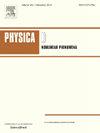Spatial moment dynamics and biomass density equations provide complementary, yet limited, descriptions of pattern formation in individual-based simulations
IF 2.7
3区 数学
Q1 MATHEMATICS, APPLIED
引用次数: 0
Abstract
Spatial patterning is common in ecological systems and has been extensively studied via different modeling approaches. Individual-based models (IBMs) accurately describe nonlinear interactions at the organism level and the stochastic spatial dynamics that drives pattern formation, but their computational cost scales quickly with system complexity, limiting their practical use. Population-level approximations such as spatial moment dynamics (SMD)—which describe the moments of organism distributions—and coarse-grained biomass density models have been developed to address this limitation. However, the extent to which these approximated descriptions accurately capture the spatial patterns and population sizes emerging from individual-level simulations remains an open question. We investigate this issue considering a prototypical population dynamics IBM with long-range dispersal and intraspecific competition, for which we derive both its SMD and coarse-grained density approximations. We systematically compare the performance of these two approximations at predicting IBM population abundances and spatial patterns. Our results highlight that SMD and density-based approximations complement each other by correctly capturing these two population features within different parameter regimes. Importantly, we identify regions of the parameter space in which neither approximation performed well, which should encourage the development of more refined IBM approximation approaches.
空间力矩动力学和生物量密度方程在基于个体的模拟中提供了互补但有限的模式形成描述
空间格局在生态系统中很常见,并通过不同的建模方法得到了广泛的研究。基于个体的模型(ibm)准确地描述了生物体水平上的非线性相互作用和驱动模式形成的随机空间动力学,但它们的计算成本随着系统复杂性而迅速扩大,限制了它们的实际应用。种群水平的近似,如描述生物分布的空间时刻动力学(SMD)和粗粒度的生物量密度模型,已经被开发来解决这一限制。然而,这些近似的描述在多大程度上准确地捕捉了个体水平模拟中出现的空间模式和种群规模,仍然是一个悬而未决的问题。我们考虑了一个具有长距离分散和种内竞争的典型种群动态IBM,为此我们推导了SMD和粗粒度密度近似。我们系统地比较了这两种近似方法在预测IBM种群丰度和空间模式方面的性能。我们的结果强调SMD和基于密度的近似通过在不同参数范围内正确捕获这两个总体特征而相互补充。重要的是,我们确定了参数空间中两个近似都表现良好的区域,这应该鼓励开发更精细的IBM近似方法。
本文章由计算机程序翻译,如有差异,请以英文原文为准。
求助全文
约1分钟内获得全文
求助全文
来源期刊

Physica D: Nonlinear Phenomena
物理-物理:数学物理
CiteScore
7.30
自引率
7.50%
发文量
213
审稿时长
65 days
期刊介绍:
Physica D (Nonlinear Phenomena) publishes research and review articles reporting on experimental and theoretical works, techniques and ideas that advance the understanding of nonlinear phenomena. Topics encompass wave motion in physical, chemical and biological systems; physical or biological phenomena governed by nonlinear field equations, including hydrodynamics and turbulence; pattern formation and cooperative phenomena; instability, bifurcations, chaos, and space-time disorder; integrable/Hamiltonian systems; asymptotic analysis and, more generally, mathematical methods for nonlinear systems.
 求助内容:
求助内容: 应助结果提醒方式:
应助结果提醒方式:


